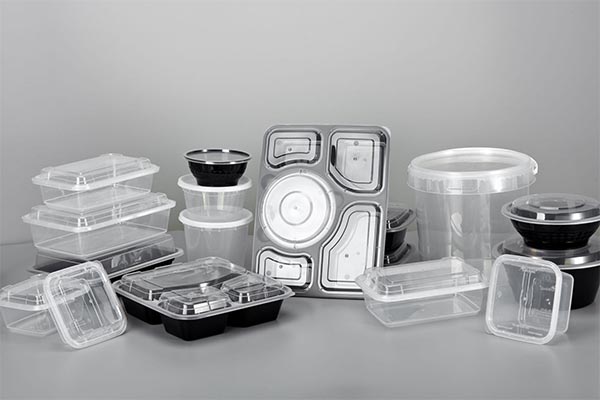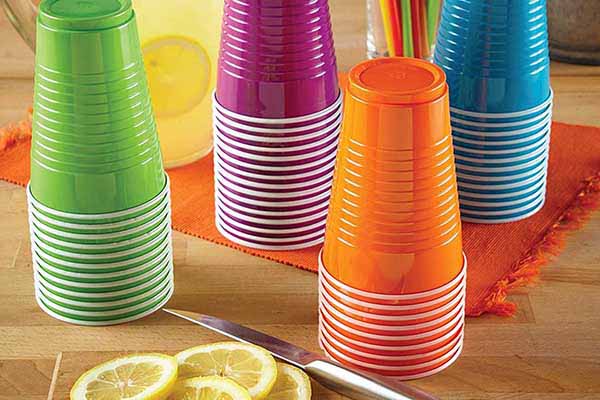What are the advantages of EVOH high barrier plastic sheet?
Plastic packaging sheets are often used to produce disposable plastic cups, plates, bowls, dishes, boxes and other thermoforming products, which are widely used in the packaging of food, vegetables, fruits, beverages, dairy products, industrial parts and other fields.
The plastic sheet has good flexibility and transparency, and can be easily made into popular styles of various shapes. Compared with glass, it is less shatterable, light in weight and easy to transport. However, the packaging industry usually requires plastic packaging sheets to have both mechanical strength, heat resistance, cold resistance, gas and water vapor barrier, gloss and transparency, heat sealability, printability and non-toxicity.


Single-layer plastic sheets clearly cannot meet all of these properties, such as packaging for oxygen-sensitive goods that do not provide the same barrier to metal and glass containers. Therefore, it is necessary to produce multi-layer composite sheets, to reflect the various properties of different plastic raw materials in the products, and to embody the advantages of various resins, so that the properties of the products can further meet the requirements of various packaging materials.
In the field of cold chain food packaging, people used metal or glass materials as food packaging to effectively isolate the penetration of various gas components inside and outside to ensure the quality of the contents and commodity value. Because there are three major factors that cause food spoilage: biological factors (biological enzyme reactions, etc.), chemical factors (mainly oxidation of food components) and physical factors (hygroscopic, drying, etc.). These factors play a role in environmental conditions such as oxygen, light, temperature, moisture, etc., which cause food spoilage. Preventing the deterioration of food is mainly to inhibit the proliferation of microorganisms in food, prevent the oxidation of food components by oxygen, and prevent moisture and maintain the original flavor of food.
EVOH can greatly inhibit the intrusion of oxygen in the air into food, thereby inhibiting the production of toxins and other harmful substances due to the proliferation of microorganisms, and can also prevent composition changes caused by oxidation, while maintaining fragrance and preventing external odor pollution.
EVOH is a non-toxic and environmentally friendly material, and it will not produce toxic and harmful substances in specific processing links. EVOH also has excellent barrier properties, oil resistance, chemical corrosion resistance and transparency, as well as strong antistatic properties, so it is widely used in the fields of fuel tanks and related materials for air barrier.


Advantages of EVOH:
1. Provides high barrier properties in low humidity environments.
2. Good barrier effect on chemicals, including most oils, acids and solvent pesticides.
3. High transparency: ensure the ease of operation.
4. The smell is fragrant and the hand feel is good.
5. EVOH can be co-extruded with a variety of polymers.
When EVOH is used as a high barrier material, it usually adopts a multi-layer composite structure. Commonly used composite materials are: PP, HIPS, PE, EVOH, AD, and AD is the adhesive in the structure. The multi-layer composite structure can give full play to the properties of each material, improve the water resistance of EVOH, and obtain a high-barrier material with excellent comprehensive properties.
EVOH is widely used not only for dry food packaging, but also for water-based food such as milk, juice drinks, condiments, beer, wine, and mineral water. In addition to oxygen, EVOH also has excellent barrier properties to other gases such as carbon dioxide, nitrogen, helium, and ammonia.
Relative News
- The 37th China International Plastics and Rubber …
- Review of the first day of the 2025 Chinaplas exh…
- Application and unique advantages of light blocki…
- PULIXIN sincerely invites you to visit 2025Chinap…
- Today’s shipment – 20 tons of anti-fr…
- Customer Case: Successful Application of Anti-fre…
- How does the impact resistance of HIPS plastic sh…
- How to choose the appropriate HIPS sheet thicknes…
- Application Cases of PS Plastic Sheets in Thermof…
- Today’s shipment: Antistatic PP plastic she…
